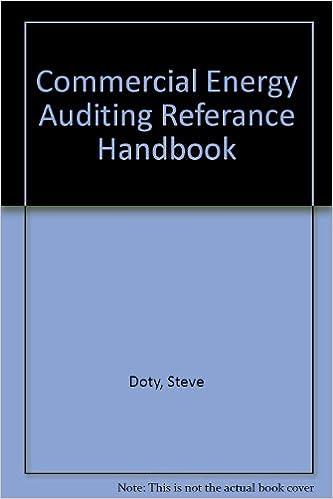




Prince Corporation acquired 100 percent of Sword Company on January 1, 20X7, for $179,000. The trial balances for the two companies on December 31, 20X7, included the following amounts: Sword Company Debit Credit $ 43,000 64,000 116,000 38,000 162,000 Item Cash Accounts Receivable Inventory Land Buildings and Equipment Investment in Sword Company Cost of Goods Sold Depreciation Expense Other Expenses Dividends Declared Accumulated Depreciation Accounts Payable Mortgages Payable Common Stock Retained Earnings Sales Income from Sword Company Prince Corporation Debit Credit 83,000 59,000 172,000 81,000 495,000 220,000 495,000 22,000 72,000 57,000 $ 150,000 64,000 195,000 293,000 308,000 685,000 61,000 $1,756,000 $1,756,000 253,000 12,000 72,000 20,000 $ 60,000 31,000 162,000 42,000 84,000 401,000 $780,000 $780,000 Additional Information 1. On January 1, 20X7, Sword reported net assets with a book value of $126,000. A total of $20,000 of the acquisition price is applied to goodwill, which was not impaired in 20X7. 2. Sword's depreciable assets had an estimated economic life of 11 years on the date of combination. The difference between fair value and book value of tangible assets is related entirely to buildings and equipment. 3. Prince used the equity-method in accounting for its investment in Sword. 4. Detailed analysis of receivables and payables showed that Sword owed Prince $26,000 on December 31, 20X7. Required: a. Prepare all journal entries recorded by Prince with regard to its investment in Sword during 20X7. (If no entry is required for a transaction/event, select "No journal entry required" in the first account field.) View transaction list Journal entry worksheet Record the initial investment in Sword Co. Note: Enter debits before credits. Event General Journal Debit Credit Record entry Clear entry View general journal b. Prepare all consolidating entries needed to prepare a full set of consolidated financial statements for 20x7. (If no entry is required for a transaction/event, select "No journal entry required" in the first account field.) view transaction list Consolidation Worksheet Entries B C D E Record the basic consolidation entry. Note: Enter debits before credits. Event Accounts Debit Credit Record entry Clear entry view consolidation entries $ 0 $ 0 $ 0 $ 0 $ Statement of Retained Earnings Beginning balance Net income Less: Dividends declared Ending Balance Balance Sheet Assets Cash Accounts receivable Inventory Land 0 0 $ 0 0 $ Buildings & equipment Less: Accumulated depreciation Investment in Sword Co. Goodwill Total Assets Liabilities & Equity Accounts payable Mortgages payable Common stock Retained earnings Total Liabilities & Equity | $ 0 $ 0 $ 0 $ 0 $ Prince Corporation acquired 100 percent of Sword Company on January 1, 20X7, for $179,000. The trial balances for the two companies on December 31, 20X7, included the following amounts: Sword Company Debit Credit $ 43,000 64,000 116,000 38,000 162,000 Item Cash Accounts Receivable Inventory Land Buildings and Equipment Investment in Sword Company Cost of Goods Sold Depreciation Expense Other Expenses Dividends Declared Accumulated Depreciation Accounts Payable Mortgages Payable Common Stock Retained Earnings Sales Income from Sword Company Prince Corporation Debit Credit 83,000 59,000 172,000 81,000 495,000 220,000 495,000 22,000 72,000 57,000 $ 150,000 64,000 195,000 293,000 308,000 685,000 61,000 $1,756,000 $1,756,000 253,000 12,000 72,000 20,000 $ 60,000 31,000 162,000 42,000 84,000 401,000 $780,000 $780,000 Additional Information 1. On January 1, 20X7, Sword reported net assets with a book value of $126,000. A total of $20,000 of the acquisition price is applied to goodwill, which was not impaired in 20X7. 2. Sword's depreciable assets had an estimated economic life of 11 years on the date of combination. The difference between fair value and book value of tangible assets is related entirely to buildings and equipment. 3. Prince used the equity-method in accounting for its investment in Sword. 4. Detailed analysis of receivables and payables showed that Sword owed Prince $26,000 on December 31, 20X7. Required: a. Prepare all journal entries recorded by Prince with regard to its investment in Sword during 20X7. (If no entry is required for a transaction/event, select "No journal entry required" in the first account field.) View transaction list Journal entry worksheet Record the initial investment in Sword Co. Note: Enter debits before credits. Event General Journal Debit Credit Record entry Clear entry View general journal b. Prepare all consolidating entries needed to prepare a full set of consolidated financial statements for 20x7. (If no entry is required for a transaction/event, select "No journal entry required" in the first account field.) view transaction list Consolidation Worksheet Entries B C D E Record the basic consolidation entry. Note: Enter debits before credits. Event Accounts Debit Credit Record entry Clear entry view consolidation entries $ 0 $ 0 $ 0 $ 0 $ Statement of Retained Earnings Beginning balance Net income Less: Dividends declared Ending Balance Balance Sheet Assets Cash Accounts receivable Inventory Land 0 0 $ 0 0 $ Buildings & equipment Less: Accumulated depreciation Investment in Sword Co. Goodwill Total Assets Liabilities & Equity Accounts payable Mortgages payable Common stock Retained earnings Total Liabilities & Equity | $ 0 $ 0 $ 0 $ 0 $











